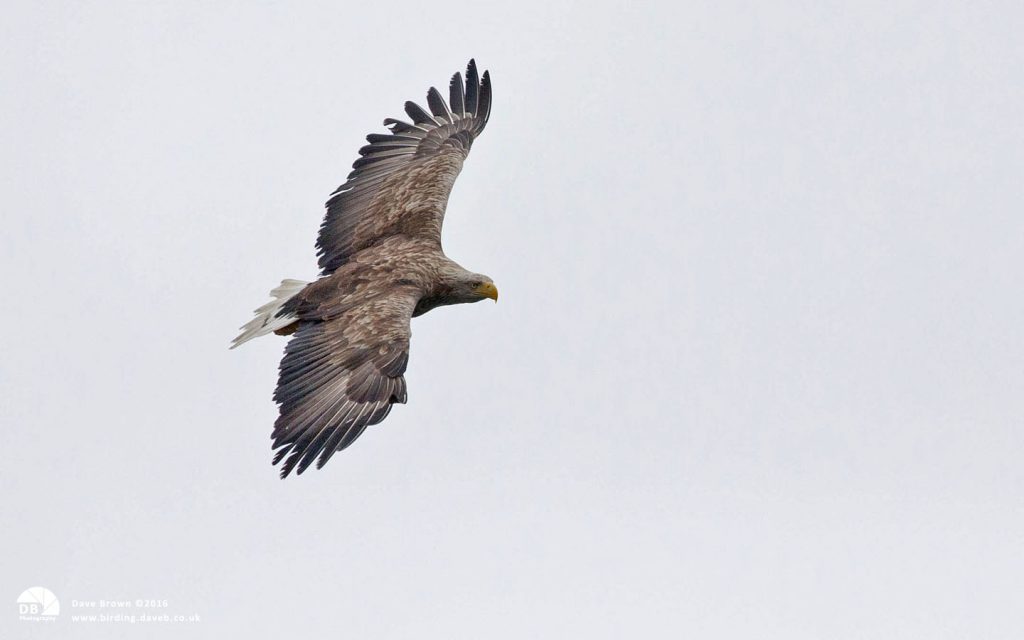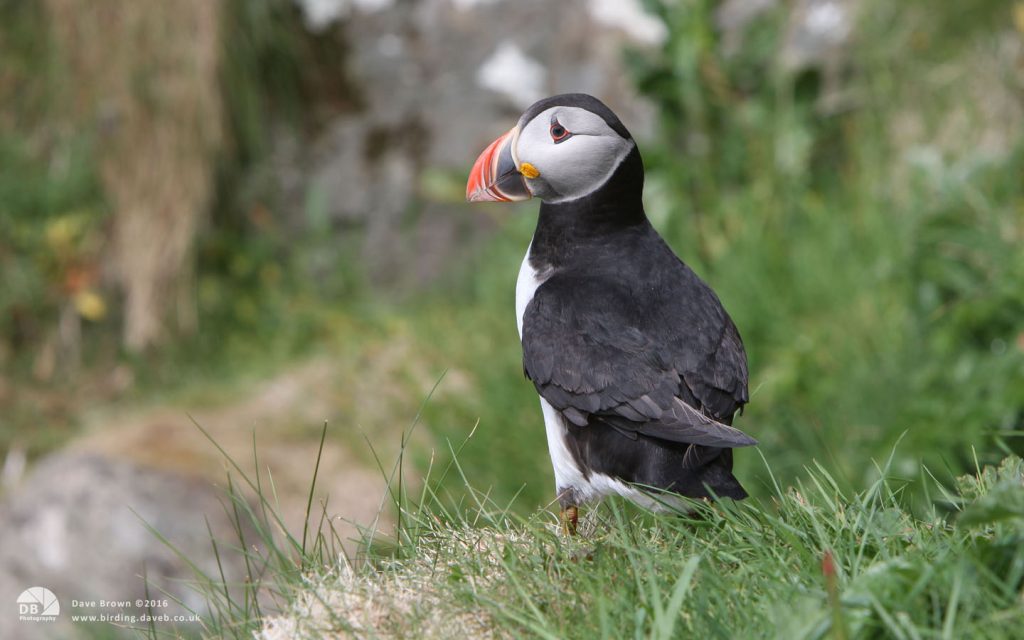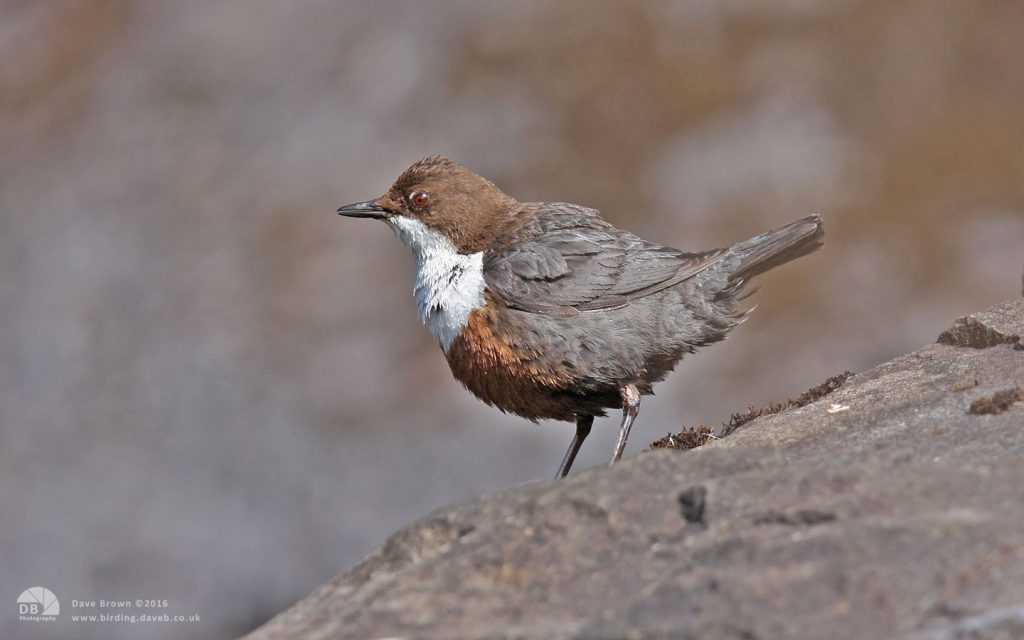Trip to Mull (27th May to 1st June 2012)
Mull was visited from 27th May to 1st June 2012, with a total 91 different species of birds seen during this time. Otters and dolphins were also seen during the visit, which in my opinion couldn’t have gone any better. I hope you enjoy reading my experiences from what was a fantastic few days on Mull.
Day 1, Sunday 27th May

Started the journey to Mull early on Sunday morning at 4.30am and managed to get to Cruachan Power Station visitor centre before having my first break and a welcome cup of coffee at 9am. The weather was just about perfect and it was good to hear the unmistascable sounds of Wood Warbler and Cuckoo (both were heard above the train station and not seen). A distant Osprey was seen in flight, but was disappointed to learn they are not occupying last years nest that can be seen directly opposite the visitor centre. Other birds here included Common Buzzard (2), Willow Warbler (2), Blackcap (1), Chaffinch (2), Pied Wagtail (1), Robin (1), Siskin (10+), Lesser Redpoll (1), Woodpigeon (2) and Goldfinch (1).
Topped up with diesel at a garage on the outskirts of Oban and moved on to check in for the ferry crossing. I had planned to be at the ferry terminal an hour early in the hope of seeing Black Guillimot in the harbour. I couldn't see any in the immediate area so I decided to walk beyond the visitor centre, where at least ten were seen (one walking so close to me I could have touched it). Herring Gull (30+), Feral Pigeon (2) and House Sparrow (10+) were also seen whilst waiting for the ferry. The crossing itself was surprisingly quiet with two Gannets being the only birds of note.
Once on the island I had planned to work various locations across the south of the island. The first stop was Duart Castle where Rock Pipit (4), Greylag Goose (10+), Red–breasted Merganser (2), Red–throated Diver (1), Common Gull (4), Willow Warbler (1), Rock Pipit (2), Oystercatcher (10+), Lesser Redpoll (1), Song Thrush (2), Common Whitethroat (1), Swallow (4+), Garden Warbler (1) and Blackbird (1) were seen.
The road to Grasspoint produced House Sparrow (10+), Collared Dove (2), Woodpigeon (4+), Grey Heron (5), Canada Goose (10+), Meadow Pipit (6+), Sparrowhawk (1), Hooded Crow (1), Stonechat (1) and Cuckoo (1 heard). Several deer were seen in the loch cooling themselves from the mid–afternoon sun (very warm day).
The drive to Loch Spelve produced Common Snipe (1), Mute Swan (2) and Common Buzzard (1). Two Hen Harriers (male & female) and two Golden Eagles were seen from the road that leads through Glen More. The drive to Fionnphort and Fidden added Wheatear (10+), Wren (1) and Shelduck (2) to the list before settling down for the night at Fidden.
Day 2, Monday 28th May

Woke up to the sound of Oystercatcher (4+), Wheatear (2+), Meadow Pipit (10+), Rock Pipit (2+), Skylark (2+) and Cuckoo (2). Starling (30+), House Sparrow (10+), Ringed Plover (1), Lapwing (2) and Grey Heron (3) were also seen. There were no Corncrakes heard (or seen) overnight, so I decided to stick to my plan and head off for Iona.
The ferry crossing to Iona was very quiet, but once on the island I was rewarded with good views of a Glaucous Gull that was on the rocks between the ferry and abbey. A Corncrake was heard and seen after only fifteen minutes at the Abbey (two other birders had seen a Corncrake in the field behind the fire station). Other birds on Iona included Great Black–backed Gull (2+), Herring Gull (10+), Shag (10+), Jackdaw (2+), House Sparrow (10+), Linnet (2), Swallow (4+), Common Gull (10+), Common Snipe (1 roding), Sedge Warbler (6+), Willow Warbler (3+), Blackbird (2), Starling (1), Hooded Crow (4+), Collared Dove (2), Rook (20+), Robin (2), Wren (1), Blackcap (1), Song Thrush (4+), Common Buzzard (1), Cuckoo (1 heard), Rock Dove (2) and Wheatear (1).
At lunchtime, I sat by the ferry terminal on Iona and enjoyed the peace & quiet before heading back to Mull in what had turned out to be another very hot day (arguably, the hottest day of the week).
A Black Guillimot and a single Eider were at Loch na Lathaich. A Common Sandpiper was on the road before the turn off for Carsaig, where two Wood Warblers were heard but not seen. A Cuckoo and a Common Buzzard were seen during the journey to Carsaig and a third Wood Warbler was heard towards the end of the road. The final stretch of this road was quite steep and narrow and is not a road I would recommend for people who are scared of heights.
Two White–tailed Eagles, three Golden Eagles and two Ravens were seen from road that runs north of Loch Schrodain (5pm). A late evening walk around the top of Loch a Chumhainn (Dervaig) produced Common Sandpiper (4), Curlew (4), Oystercatcher (6), Common Gull (10+), Mallard (4), Grey Heron (3), Greylag Goose (2) and Red–breasted Merganser (3). An Otter and a Barn Owl were seen at dusk, which was a perfect way to end day 2.
Day 3, Tuesday 29th May

The weather was a bit cooler today and was slightly overcast with no rain throughout the day. This did make a difference in the quality of birding and photography, but was still a good day.
A Great Northern Diver was seen in Laggen Bay (9am), with two Rock Doves and a Common Buzzard seen near–by.
Two White–tailed Eagles, one Golden Eagle, two Common Buzzards, a Raven and several Hooded Crows were seen at Loch na Keal. At least two Red–throated Divers were on the loch, which also had two Common Sandpipers. Another Golden Eagle was seen during a quick visit to the other side of the loch.
Three Ravens were seen near the tip at Tobermory. A Cuckoo was heard and then seen at Loch Torr. Five Whinchat, a Tree Pipit, one Wheatear, two Swallows, three Pied Wagtails, a Starling, 3–4 Willow Warblers heard, two Grey Herons, a Song Thrush, five Hooded Crows, two Woodpigeon and at least three Raven were seen during a two–way drive through Glen Aros.
Once I got back to the Bed & Breakfast, I decided to check for the Otter and was rewarded with some good (but too distant for photography) views before the midges forced me to go inside.
Day 4, Wednesday 30th May
Today was a planned boat trip to Staffa and Lunga, so I was pleased to see the weather had not deteriated too much overnight and decided to have a slow drive down to Ulva via Calgary Bay, where Black–throated Diver (1), Black Guillimot (1), Shag (10+), Red–breasted Merganser (4), Eider (2 families), Stonechat (2), Swallow (2), Common Whitethroat (3), Hooded Crow (2), Lesser Black–backed Gull (4) and Herring Gull (10+) were seen.
The road from Calgary Bay to Kilninian produced Common Buzzard (1), Hooded Crow (10+), Northern Wheatear, Kestrel (1), Great Spotted Woodpecker (1) and Meadow Pipit (1). Good potential here for other woodland birds and perhaps Corncrake on the road to Treshnish (worth noting that no motor vehicles are allowed on the road to Treshnish, but there is a small car parking area close to the top of the road).
 The boat trip itself was good with one hour on Staffa and two hours on Lunga. The first island we visited was Staffa where Common Snipe (3), Oystercatcher (2), Twite (4+), Rock Pipit (8+), Wren (1), Starling (2), Fulmar (6+), Great Black–backed Gull (10+) were seen. A surprise bird here was a calling Corncrake, which was briefly seen before leaving for Lunga.
The boat trip itself was good with one hour on Staffa and two hours on Lunga. The first island we visited was Staffa where Common Snipe (3), Oystercatcher (2), Twite (4+), Rock Pipit (8+), Wren (1), Starling (2), Fulmar (6+), Great Black–backed Gull (10+) were seen. A surprise bird here was a calling Corncrake, which was briefly seen before leaving for Lunga.
Numerous Puffin (200+) were on Lunga allowing visitors to get close enough for some very good photograph opportunities. Shag (10+), Fulmar (10+), Razorbill (10+), Raven (1), Hooded Crow (1), Wheatear (3), Rock Pipit (4+) and Meadow Pipit (2) were also seen. It is advised to wear good footwear when visiting this island as there is no jetty and the rocks can be a bit hazardous. The path beyond the Puffins is also a bit dangerous and a good head for heights is required.
The crossing to and from the islands produced Manx Shearwater (10+), Great Skua (1), Black Guillimot (6+), Kittiwake (10+), Guillimot (50+), Common Tern (50+) and Puffin (100+). A pod of at least seven Dolphins were seen on the return journey, which brightened up what was turning into a dull and breezy evening.
Decided to go back to Dervaig the same way (via Calgary) where a ringtail Hen Harrier, a Short–eared Owl and a male Kestrel were seen.
Lesson learned from todays trip to Staffa and Lunga was not to be fooled in thinking you will not need too much reach where photography is concerned. After a discussion with a fellow photographer, I opted to take the 70x200 with a 1.4 extender and my compact for closer opportunitities. This was a good decicion, but it would have been better if I had chosen to change between the 300mm and 24x70 lenses.
Day 5, Thursday 31st May
A very wet, dull, cloudy and breezy start to the day, which typically arrived on the day I was going to photograph the eagles. This time I knew which lens to take, but was a bit concerned about the weather and would have liked some protection for the 300mm F2.8 Prime and soon to be upgraded 40D body.
A Cuckoo was heard calling at Achleck. A Grey Heron, two Shelducks, a House Martin, two Swallows and at least one Common Sandpiper were in Laggan Bay, but there was no sign of the Great Northern Diver that was seen there on tuesday.
Lesser Redpoll was heard and seen at Ulva ferry and an Otter was seen on the way out. The White–tailed Eagles were fed three times and a number of decent photos were taken in the poor conditions. Very quiet trip back to Ulva, but still worth every penny of the £35 cost.
 Once ashore, I decided to head for the south shore of Loch na Keal, where an adult Golden Eagle was seen. I also located the nest where one of the chicks were clearly visible when looking through the scope. Common Buzzard (2), Raven (8), Hooded Crow (4), Twite (1), Linnet (4+), Wheatear (10+) and Common Sandpiper (2) we're seen whilst driving along the south side of the loch.
Once ashore, I decided to head for the south shore of Loch na Keal, where an adult Golden Eagle was seen. I also located the nest where one of the chicks were clearly visible when looking through the scope. Common Buzzard (2), Raven (8), Hooded Crow (4), Twite (1), Linnet (4+), Wheatear (10+) and Common Sandpiper (2) we're seen whilst driving along the south side of the loch.
By mid–afternoon, the weather had improved and was offering good light for photography, so I decided to take some photographs of a waterfall close to the eagle watchpoint car park. I managed to get some nice pictures of the waterfall and also some good photographs of the Dippers that were busy feeding their young in the nest that was behind the waterfall. A White-tailed Eagle, a Common Buzzard and a Raven flew over during a very enjoyable 2–3 hours.
Day 6, Friday 1st June
A nice start to the day. The weather looked promising for the people staying on Mull and I was beginning to wish that I had booked myself on a later ferry, especially when the Otter made an appearance during breakfast. Once I thought it had left the loch, I finished breakfast and said my goodbye’s.
After leaving the B&B, I decided to have one last look for the Otter, which was seen from the bridge at Dervaig. Unfortunately, it was still in the middle of the loch and it didn’t come any closer in the 30 minutes I was there. It was however, a perfect way to end my stay in Dervaig and Mull. Greenfinch (1) and Coal Tit (1) were added to the trip list before heading off to the ferry.
Other than seeing another two distant Otters on the outskirts of Craignure, the journey to the ferry was very quiet. The crossing was also quiet, but there was a Lesser Black–backed Gull that was amusing everyone as it continuously flew very close to them and landing on the ferry for a free ride to Oban. The scenery was once again fantastic as the sun was shining with very little wind.
Once back on the mainland, I decided to have another look at the Black Guillimots that put on such a good display before boarding the ferry to Mull. However, they were nowhere to be seen and I missed the opportunity of seeing them at close range before setting off for the long drive home (bank holiday weekend).
Summary
This trip to Mull has been very enjoyable and I have brought some fantastic experiences home with me that I will find very hard to forget.
With the exception of Thursday morning, the weather could not have been better. This small change in weather did highlight that poor weather will affect the quality of the birding & photography that can be found on the island, but the same can be said wherever you are. There were very few places to eat out on an evening and what was available was slightly expensive. There were a handfull of Spar shops scattered across the island that offered the opportunity of purchasing items of food to make yourself and the mobile phone reception was also very poor (definitely o2).
Accommodation opportunities appeared to be plentiful, but it is advised to do your research and book early. Always call and chat to the B&B owner before booking, making sure the accommodation will meet your needs (the same can be said for the tour operators). For example, the owner of the B&B that I stayed at offered good clean accommodation, coffee making facilities, en–suite bathroom and free wifi. She was also full of advice, cooked a superb breakfast and was always ready to let me know when the otter was displaying. A big thankyou to Catherine Duffy (Tigh na Mara B&B in Dervaig) for an excellent stay.
Dervaig was a good location to explore the north of the island with four roads leading in and out, all of which offered good birding & photography opportunities when the weather was right. The narrow roads made travel time a bit more time consuming than you would think, so it might be worth considering a B&B in a central location if planning to spend time in the south of the island (i.e. Iona).
The birding and photography was typical of what can be found on Mull and this report shows some of the opportunities that are available to anyone who is planning to visit the island. If I was to change anything, I would stay longer with the aim of being able to explore the areas that I was unable to visit on this trip and possibly try an alternative tour of the islands. A selection of photographs can be viewed by clicking here.